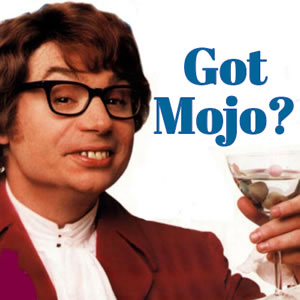A short while ago I wrote this post about the emerging online market for travel writing.
I explained how changes in search engine and social media technology were causing commercial travel websites to start seeing themselves as travel publishers in their own right, opening up significant new opportunities for professional travel journalists.
The idea is that commercial travel websites’ long-term success will depend upon publishing content that is so extraordinarily good that visitors will share, comment, Like, Tweet, +1 and otherwise interact with it using social media tools.
In theory this means that travel writers will begin to enjoy a much stronger online market for their trade, as junky low paying content is replaced by the high grade, professional journalism that websites will need to succeed.
But writers will need to prepare for this emerging market by broadening the definition of their portfolio.
Here are some important things that the new publishers will be looking for:
Creating “Sharable” Content
Social media interactions with your content are the publisher’s main goal. The more interactions your contributions generate, the better their site will perform on search engines and social media sites. In principle this doesn’t require a significant departure from the traditional standards of quality writing: after all, a social media share is basically equivalent to an offline share: someone saving a magazine article and passing it on to a friend. In order to achieve both, the content simply has to be worth sharing in the first place.
That means detail-oriented, practically useful, entertaining, witty or controversial writing. In other words, no more bland Top Ten lists and other generic content that has clogged up the web for so long. In its place should be compelling, well researched, engaging travel writing that offers something of unique value to the reader, something they cannot find elsewhere – just like a pro would write for a newspaper or magazine.
But it also means recognizing the different habits of the online reader. Your writing must contend with the fact that attention spans are much shorter and distractions are plentiful. This means grabbing attention early, getting to the point quickly, using short sentences & paragraphs, and writing as concisely as possible.
Accept that most readers rarely finish an online article in its entirety and they will often drop off after the first few paragraphs. But if you can make your impact within that golden zone, people will happily share, Like, Tweet or +1 the article before reaching the end. Aim to inspire that interaction within the first paragraph with bold, attention grabbing introductions that give promise to what the article contains – often that will be enough to elicit valuable shares.
Provide Social “Added Value”
Demonstrating your ability to produce the above is an important first step. Get into the habit of monitoring the shares and interactions that your content generates, and use that data in your pitches and correspondence with editors.
Even more importantly, demonstrate that you can add value to your contributions with your own social media networks. For an online publisher, your article is only half of your product. They are also looking for writers with extensive social media reach and name authority that can be used to cross-promote their contributions.
You can provide this by:
- Choosing a niche and become an authority: post frequently about your subject on your own blog, and in guest posts on other blogs and sites. Aim to become known as “the expert” in your niche, whatever that may be (Peruvian cuisine, SE Asian beaches, French walking holidays, etc).
- Building your blog’s traffic & subscribers. Tell editors that you can link to your contributions from your own blog, to send extra traffic and discussion to their site.
- Developing a professional social media following, especially on Twitter, Facebook and Google+. Demonstrate to editors that you have wide networks on all three, and that you can share your contributions on your own networks.
- Registering with Google Authorship to develop your position as an authority. Use your profile in your contributions to increase the publisher’s social connections. The more Google+ followers you have, the more useful this will be.
These factors will begin to determine the budget and rates that online publishers will offer for your work. Start to consider them as part of your overall portfolio and work on developing your online and social presence as a central part of your “product”.
Sign up for assignment information from the Travel Content Network. Register your areas of expertise and interest and specify your preferred rate to receive information of all relevant assignments.
~ Matthew






Excellent advice Matthew, and so true! These days editors don’t have the luxury of working with writers who can’t also contribute – via their own platform – to the promotional efforts of a publication. Even book authors are expected to help market their own books. Thanks for sharing this!
Hi Matthew
Agree with much of your thinking here. One difference of opinion is about what makes shareable content – it absolutely has to be good quality, but I think there’s a developing trend at work around what does and doesn’t get really shared – ie lots of comments/tweets rather than just a few. And I see conflict. Often it’s the trite, silly, headline-grabbing crap that gets the buzz, not the thoughtful, well researched stuff. So your top 10 format remains alive and well – it’s no longer top 10 beaches for families though it’s top 10 beaches where you might stumble on a landmine or see an A list celeb with their bits out. People share gossip and trivia as much (more?) than they share quality content.
Jeremy
Interesting and informative article. I write hundreds of travel articles for an Australian client. The ones that are doing the best right now are the quirky ones and the longer ones that are more like mini-guidebooks than blogs. Top 5 and 10 ones still do alright, but only if the subject matter is interesting and the opening paragraph compelling. I semi-agree with Jeremy – “Top Ten Beaches Where You Might Step on a Landmine” may get a lot of hits, but may not generate leads. On one of my blogs, an inadvertently irrelevant but (I think) clever title gets the most traffic by far, but readers only stay long enough to realize it’s not what they’re looking for. It has a bounce rate of close to 100 percent.
Good points Jeremy & Rob. I’m doing some work on looking more closely at what gets shared and what doesn’t, and how that translates to ROI for the publisher. There are certain very popular sites out there that are built entirely on that landmine kind of stuff, and they dominate the social media space for online travel writing. They also pay between zero and $20 per article, and would never be able to show value to a serious online travel business even if they wanted to, so there you go.
The fact is, that kind of stuff might have a role to play in publishers’ wider content strategy, but it certainly isn’t the be all and end all. As this process takes shape and we start to see tangible ROI from well researched, thoughtful travel journalism, the argument will have been won for us and quality standards will rise. Well, that’s the vision anyway.
100% bounce back rate doesn’t mean the article is bad. My most popular posts are like this, but I don’t want to change it, because it was information I was missing on web and wrote about it, but you came, read it and you don’t need anything else.
Very good point Vi – there are many reasons why a page could legitimately have a high bounce rate, and sometimes a high bounce rate is a sign that an individual page is doing its job properly. On the other hand if a site is made up of pages that *all* have high bounce rates, that might be a worrying signal to be sending the search engines, especially if the average time on page is also low.
Page design & layout is also an important element in encouraging visitors to remain on the site and read more pages – it’s never solely about the actual quality of your content.